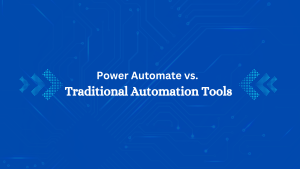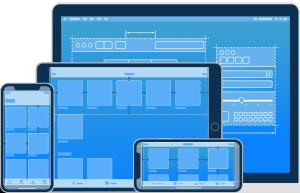
INTRODUCTION
In today’s global economy, the role of education in laying the foundation for solid social and economic growth is unquestionable. The education industry develops responsible citizens and a promising talent pool for other sectors. Today, industries are undergoing a massive shift in their operations with data analytics – and the education sector is no exception. Consequently, education institutes have swiftly adapted to data analytics-driven approaches in their operations and education outcomes. Power BI in education is emerging as a robust and effective data analytics and visualization solution to enhance operations and achieve desired growth in the industry.
DATA ANALYTICS USING POWER BI IN EDUCATION
Power BI, a Microsoft data analytics and visualization tool, has emerged as a robust and effective solution for the education industry. It can offer valuable support by generating insights from raw data and enabling informed decision-making.
In this article, we will explore the role of Power BI in the education sector in enabling efficiency and productivity.
APPLICATION OF POWER BI IN EDUCATION
Educational institutions – including schools, colleges, universities, and research centers, generate vast amounts of data in their day-to-day functioning.
Here are some specific ways in which Power BI can help the education industry improve its effectiveness and achieve desired results.
ANALYZING STUDENT DATA
Power BI in education can effectively analyze data related to student enrollments or admissions, withdrawals and retention, and alumni records.
It can filter student records by KPIs like:
- Degree or grade
- Subject major
- Term or Semester status
- Degree Level
- Demographics- including age group and location
Moreover, the student dashboards from Power BI provide accurate insights from data in an easily understandable visual format. The ability of Power BI to simultaneously merge different visuals helps academic institutes reduce manual work and resulting errors.
MONITORING ATTENDANCE AND PERFORMANCE
Power BI presents analyzed data in the form of interactive graphs and charts. Further, it connects easily to any other data source used at your educational institute. The reports generated by this tool make it easy for schools and universities to track student attendance and results – and seamlessly share them with parents and students.
RESOURCE ALLOCATION
The education industry relies on thorough planning and allocation of resources. These resources include:
- Financial planning and budgeting
- Recruiting and retaining academic and administrative staff
- Allocating classrooms, labs and equipment, and
- Facility management.
Power BI dashboards provide a comprehensive view of overall resource allocation by consolidating data from various sources and centralizing it in one place.
As a result, management teams can access accurate resource management data in interactive dashboards in real time and make timely and informed decisions. This results in better efficiency and smoother operations.
PERSONALIZED LEARNING WITH POWER BI IN EDUCATION
One remarkable feature of Power BI in education is that it allows you to extract specific data. This feature can help schools and colleges get personalized data for individual strengths and focus areas of students and devise appropriate teaching methodologies. In turn, these personalized data insights improve overall student results and performance.
FEEDBACK AND COMMUNICATION
Communication with students and parents and timely feedback can significantly impact the effectiveness of education. Power BI can provide a centralized platform for teachers to share relevant feedback data with stakeholders, parents and students. Ultimately, this increased transparency in data-sharing enhances collaboration and improves the parent and student experience.
MANAGING RESEARCH DATA AND FINDINGS
Power BI can help streamline the substantial research and findings data generated at academic and research institutions. Researchers can share their data and findings with peers and supervisors in real-time. As a result, students and professors can highlight focus areas immediately and modify their approach if needed, improving the quality of research.
COMPLIANCE REPORTING
Stakeholders in educational institutions are responsible for complying with various authorities and internal standards. Generally, the areas where education needs to comply are operational, regulatory, and statutory or accreditation bodies. Periodically, the institutions undergo internal and external audits to measure their performance and compliance with the rules.
Power BI in education helps institutes analyze the statistical data generated for compliance, empowering stakeholders to make data-informed decisions.
TARGETED STRATEGIES USING POWER BI IN EDUCATION
Whether it is fundraising for a research grant, increasing the outreach for a school, or even marketing efforts of a new college – tracking performance is paramount. Using data analytics with Power BI can help institutes track their efforts compared to targets and develop strategies targeted to their specific goals.
CONCLUSION
In a nutshell, Power BI in education has proved to be a functional and effective tool for the industry. The ability of Power BI to collect data from various sources, centralize the data and produce insights in the form of visual reports makes it a highly beneficial tool for the education sector.
Further, the easy-to-use and customizable dashboard feature of Power BI empowers educational institutes to make informed decisions and enhance their impact.
By engaging Power BI consulting services for education, stakeholders can streamline their resource management, analyze student data, track KPIs specific to education, and free up time from clerical and repetitive work.
With all these benefits from this data analytics tool, the educational sector can focus on the goals that matter the most – providing high-quality education to students.
Have you considered employing data analytics services for your education sector? Or are you facing any resistance to implementing data analytics? Let us know your thoughts – we’re always happy to hear from you.
If you have any questions or would like to know more about our services, feel free to get in touch with us.







No comment yet, add your voice below!